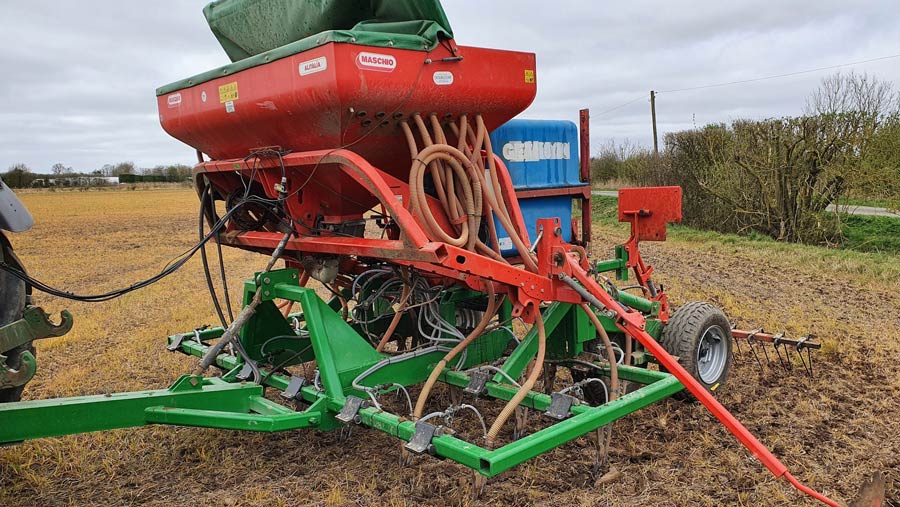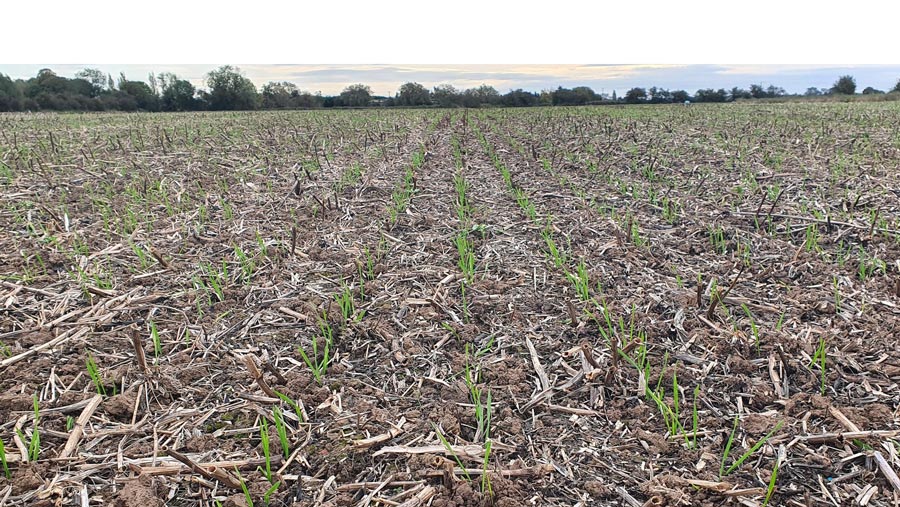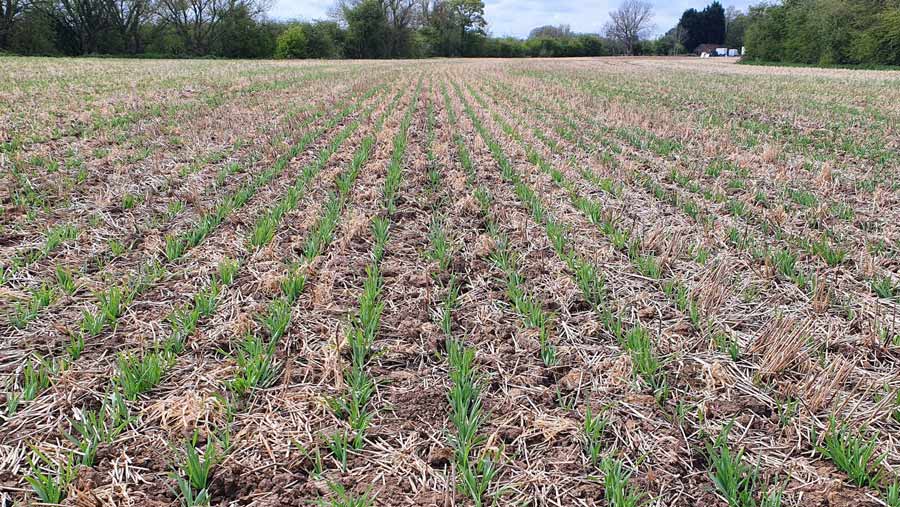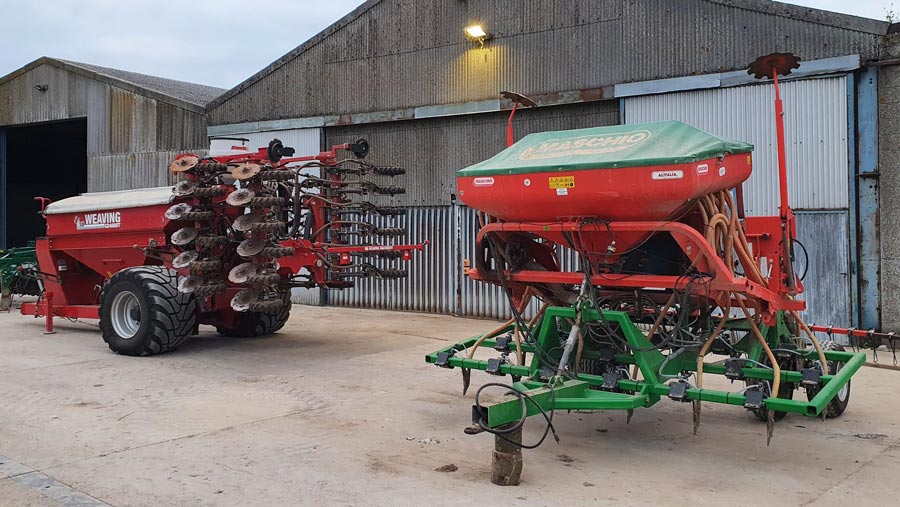How direct-drilling slashed fuel costs by 30% on Lincs farm
 © Gary Willoughby
© Gary Willoughby Making radical changes to crop establishment, such as ditching the plough and power harrow, could help farmers fill the income gap resulting from the loss of BPS payments.
This is the approach being taken by the Lincolnshire Monitor Farm.
See also: What Hereford Monitor Farms’ machinery cost review reveals
AHDB knowledge exchange manager Harry Henderson says farmers are starting to realise that they will replace at best 40% of their BPS money if they maximise the income from Environmental Land Management (ELM) schemes.
However, when looking at the detail, they are finding that some of the “ELM stuff” will not work on their farm, so they may see only 20-30% of the BPS gap being filled.
Therefore, they will need to look elsewhere in order to stay in business.
Mr Henderson points to Farmbench figures, which show that machinery and labour account for about 28% of total wheat growing costs.
He also points to a surge in machinery prices with a report from the Office of National Statistics showing that, from 2010-19, there was a 65% increase.
Farm facts: Primrose Farm

Gary and Debbie Willoughby © Gary Willoughby
- Cropping 110ha and contracting business
- Crops Include wheat, barley, linseed, beans and peas
- Soils Clay and marshy, with siltier soils towards the south
- Machinery John Deere 6215R, AR3000 Houseman Sprayer, Claas 540 6.6m, half share in 4m Weaving GD drill and homemade 3.4m tine drill
- Labour Gary Willoughby himself with Debbie helping out in harvest. He also does contract spraying and combining
Cost review
As part of their AHDB Monitor Farm stint, Gary and Debbie Willoughby invited Rob Meadley, divisional partner from Brown & Co, to review their machinery and labour costs for harvest 2020.
Up to then, they had a plough and power harrow-based establishment system on their heavy land farm seven miles inland from Skegness. Their land is predominantly clay and marshy, with siltier soils towards the south.
Crunching their figures, he calculated the couple’s operation costs. For example, ploughing with the John Deere 6215R and six-furrow plough cost £79/ha, drilling with a Maschio combi drill came to £69/ha and combining with the 6.6m cut Claas 540 was £65.97/ha.
For harvest 2020, the total machinery and labour cost for wheat was £116.12t/t. While this may seem high, he points out it was a very wet autumn in 2019 and yields were down – with wheat, for example, averaging half the average of 9t/ha.

Direct-drilled wheat © Gary Willoughby
The Willoughbys had already been looking to cut costs by moving to a direct-drilling system, securing a half share in a second-hand 4m Weaving GD drill.
Assuming no impact on yield, Mr Meadley’s calculations show that labour and machinery costs would only fall 4% (£4,275). However, the main benefits are a 30% fuel saving and a 23% time saving (354 hours).
This time saving could lead to a better work-life balance or release Mr Willoughby to do more contracting work.
For spring barley, Mr Willoughby says the reduction in labour and machinery costs from £90/t to £64/t with this approach “looks a lot better.”

Direct-drilled barley © Gary Willoughby
Tine and disc
Since harvest 2020, he has sold the plough and all crops are being established either with the Weaving or the home-made 3.4m tine drill, which he built himself.
He made the frame, the tines were supplied by JJ Metcalfe in Yorkshire, and he used the existing seed hopper on the combi drill.

© Gary Willoughby
Having both disc and tine means he can choose according to the crop and situation.
He bales and sells cereal straw, so the disc drill is ideal. Following beans where there is more residue, he would opt for the tine drill, as it copes better with the mulch.
Labour and machinery costs at Primrose Farm: How the figures stack up |
||
|
|
Plough + combi drill |
Direct drill |
|
Winter wheat |
116.12 |
108.86 |
|
Winter oilseed rape |
116.27 |
112.21 |
|
Spring beans |
77.26 |
57.99 |
|
Spring wheat |
60.11 |
51.14 |
|
Spring barley |
90.43 |
64.00 |
|
Note: The plough and combi drill have been removed and the Weaving drill at a market price of £22,000 (half share) has done all the drilling. A cover crop has been established prior to each crop. There was 10% of winter wheat area flat lifted and the contracted crop area flat lifted. Everything else remained the same. |
||

